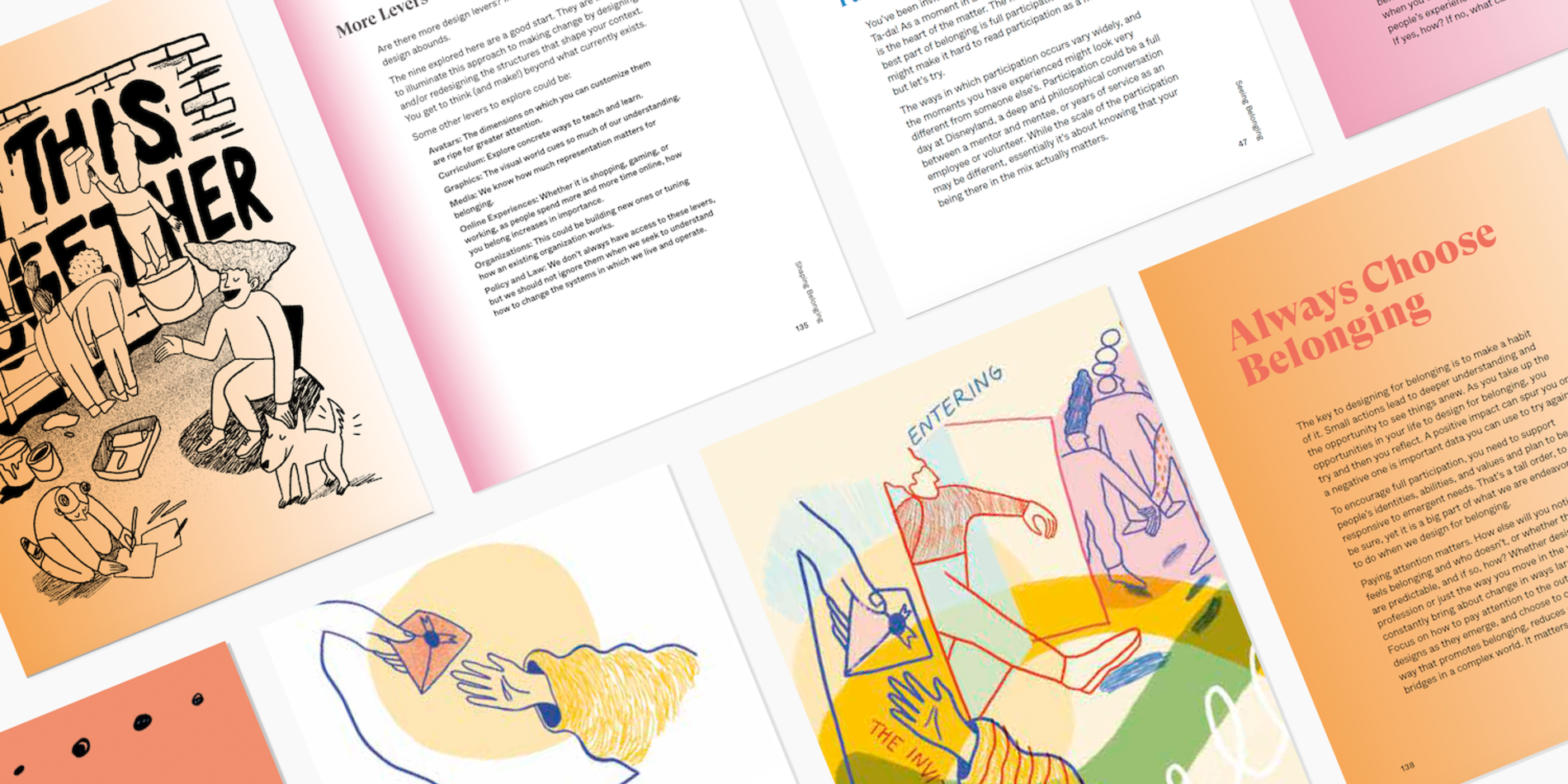Design to make a difference: How do we foster a culture of belonging?
In her new illustrated guide, Design for Belonging, Susie Wise outlines how leaders from all walks of life – from teachers to managers to community organizers – can use tangible design tools to cultivate a sense of belonging through physical spaces that promote calm, roles that create a sense of responsibility, events that make people feel included, and much more.
Wise, adjunct professor and co-creator of Design at Stanford Engineering’s d.school, is a designer with experience in education, tech, and the social sector. Keep reading to learn more about the book and how her work helps bolster innovation practices, equity design, and storytelling for inclusion.
Why is it so important for groups of any size to hope its members feel like they belong?
When people feel like they belong, they are able to do their best and be their best. When we work toward belonging, we’re working toward creating a space where collaboration and cooperation can flourish. This is true for every kind of group, big and small. Whether you’re a parent, teacher, business manager, community organizer, or leader of any sort, your group is unlikely to thrive if the individuals don’t feel welcome, included, and valued for who they are.
What is Design for Belonging?
Sometimes when we hear the word design, we think it means visual design – like logos or web design. Design for Belonging provides tools that any group or organization can use to build inclusion. These might be rituals that bring us together, spaces that keep us calm, roles that create a sense of responsibility, and systems that make us feel respected.
How do you use design tools to create a feeling like belonging?
The tools in Design for Belonging help bridge the gap between the logistical planning of your office meeting or organizational restructure and the way you want people to feel when they participate.
Here are some great examples from teachers and school leaders who have used them: reimagining the kinds of assemblies hosted at school to be more culturally relevant; creating new roles to support English language learners; reinventing parent events to help parents build relationships instead of just sitting passively in an auditorium.
We could quickly see how the kids benefited by changes like this. However, we were most moved by the teachers. The redesign connected them to what they hoped to create for young people. They were able to care about their students in ways that related to their own understanding and feeling of belonging. They tapped into their own creativity and the reasons they wanted to teach in the first place.
Your book describes what belonging and its opposite, othering, feel like. Can you summarize that?
Belonging feels like you are seen and heard. You feel alive. You’ve been invited into any given group, and you know you can be honest with the people in it. Students I’ve worked with describe it as being in a good place and being with people they’re comfortable with. They feel validated.
Othering feels like you’re not wanted or that you’re not welcome. Feeling like you have to hold back in order to fit in. Some people will have negative roles or assumptions unfairly projected upon them based on their race, outward appearance, or other aspects of their identity. My students have described it as feeling like they’re invisible or erasable. Being uncomfortable and disconnected from the group.
Do you think this book about belonging will be received differently now than it would have before the pandemic?
Yes, the pandemic has disrupted many of our rhythms, which gives us the opportunity to rethink how we do things. In addition, the Black Lives Matter movement has given us a greater awareness of the inequities embedded in our culture. Seeing the need for change is the place for design. Design for Belonging can help us redesign our schools, workplaces, and organizations to support people more effectively. It can also help us focus on belonging as the experience we are intentionally building.
I have an exercise in the book: Assumption Storming. It’s a classic tool of design. This is a moment where we can ask: “What are all our assumptions about working in the office? What are all of our assumptions about working online?” We can then lay out our responses and see which ones we want to recreate and which ones we want to let go.
My hope is that the book will help people see with a new lens and empower them to create change.
What do you want people to understand about design for belonging?
When you are working on diversity, equity, and inclusion, what you are really trying to get to is a feeling – the feeling of belonging. This book helps you use the tools of design to start building belonging and reducing othering in the places that matter to you.
We all want to educate ourselves about racial equity and we want concrete changes in our worlds, but so many people are overwhelmed by the breadth of the problem and don’t know where to start. The book is designed to help people who are uncomfortable or unfamiliar with the work of diversity, equity, and inclusion to get started.
Belonging has become a hot-button topic lately. How do you feel about the current environment in the U.S. as your book comes out?
I’m excited about the current focus on belonging. There are discussions everywhere. People from all walks of life – city leaders, businesses, transportation – are thinking about it. It will be interesting to see what happens as we come out of the social restrictions that were created during the pandemic. We have an opportunity here to look ahead and be intentional about how we rebuild.



